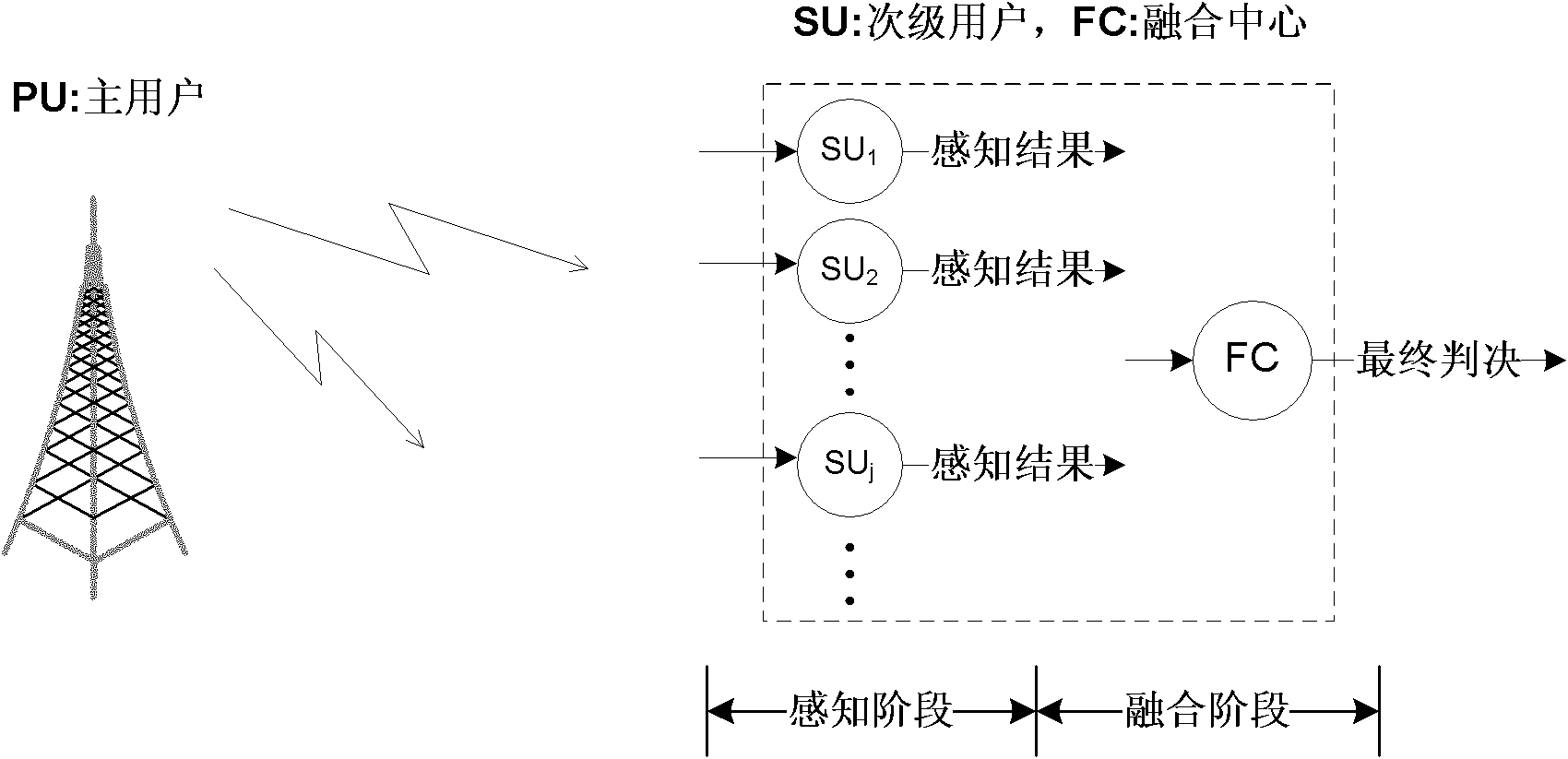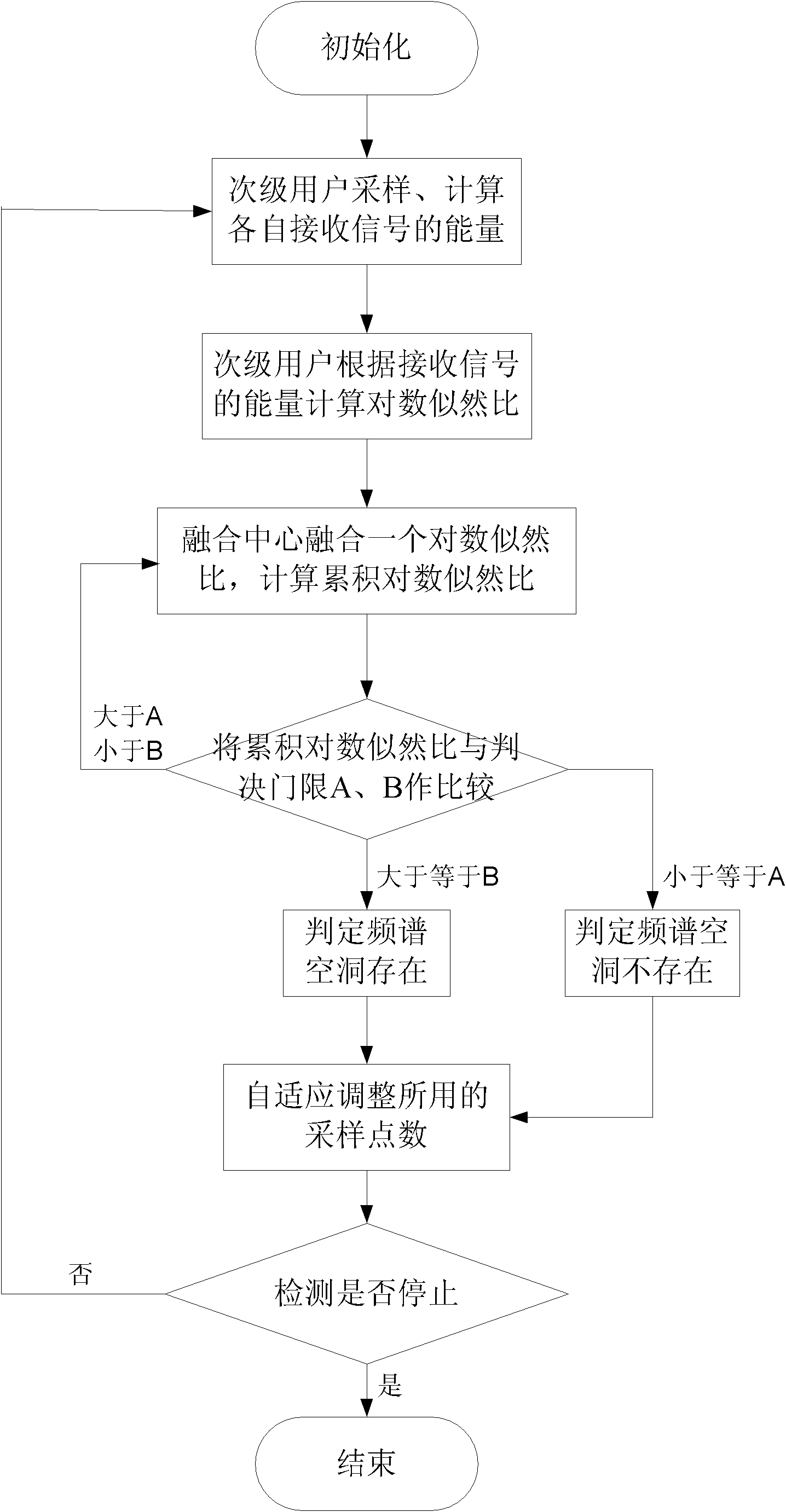Adaptive sequential cooperative spectrum detection method
A spectrum detection and collaborative detection technology, applied in the field of cognitive radio, which can solve the problems of system throughput impact, changes in usage conditions, and failure of detection results.
- Summary
- Abstract
- Description
- Claims
- Application Information
AI Technical Summary
Problems solved by technology
Method used
Image
Examples
Embodiment Construction
[0038] The specific implementation steps of the adaptive sequential collaborative detection method proposed by the present invention are as follows:
[0039] 1) Initialization. According to the sequential collaborative detection method to complete a detection, the number of sampling points and detection time are recorded as n 0 with Set the initial number of sampling points n 1 and the step size μ of adaptive adjustment; let S 0 =0, i=1.
[0040] 2) All secondary users perform n in parallel i Point sampling, and calculate the energy of each received signal based on these sampling points. The energy of the signal received by the jth secondary user is calculated as follows:
[0041] v j = Σ k = 1 n i ...
PUM
 Login to View More
Login to View More Abstract
Description
Claims
Application Information
 Login to View More
Login to View More - R&D
- Intellectual Property
- Life Sciences
- Materials
- Tech Scout
- Unparalleled Data Quality
- Higher Quality Content
- 60% Fewer Hallucinations
Browse by: Latest US Patents, China's latest patents, Technical Efficacy Thesaurus, Application Domain, Technology Topic, Popular Technical Reports.
© 2025 PatSnap. All rights reserved.Legal|Privacy policy|Modern Slavery Act Transparency Statement|Sitemap|About US| Contact US: help@patsnap.com



